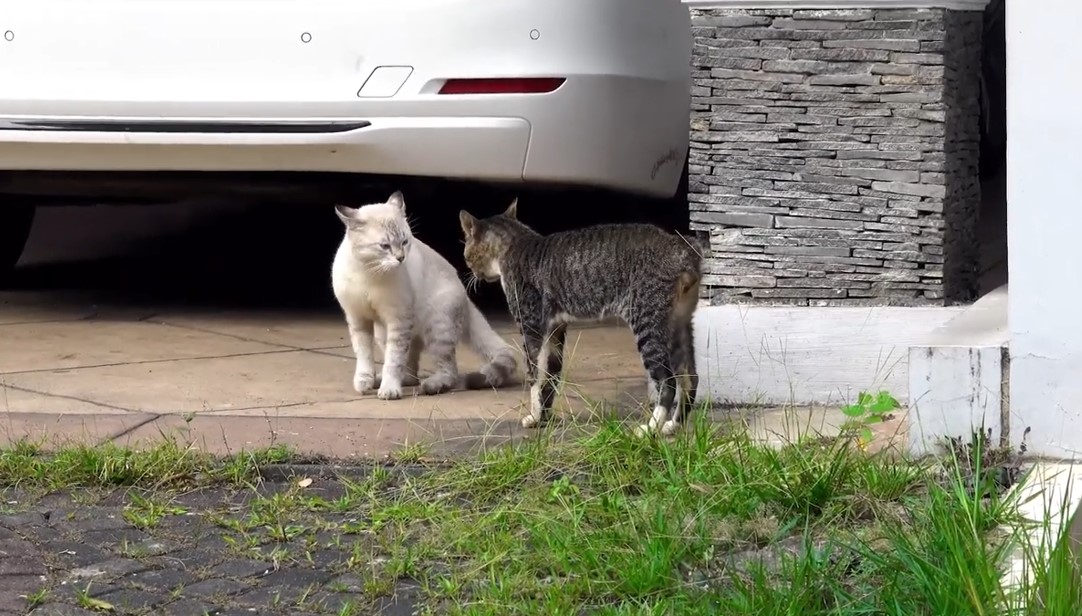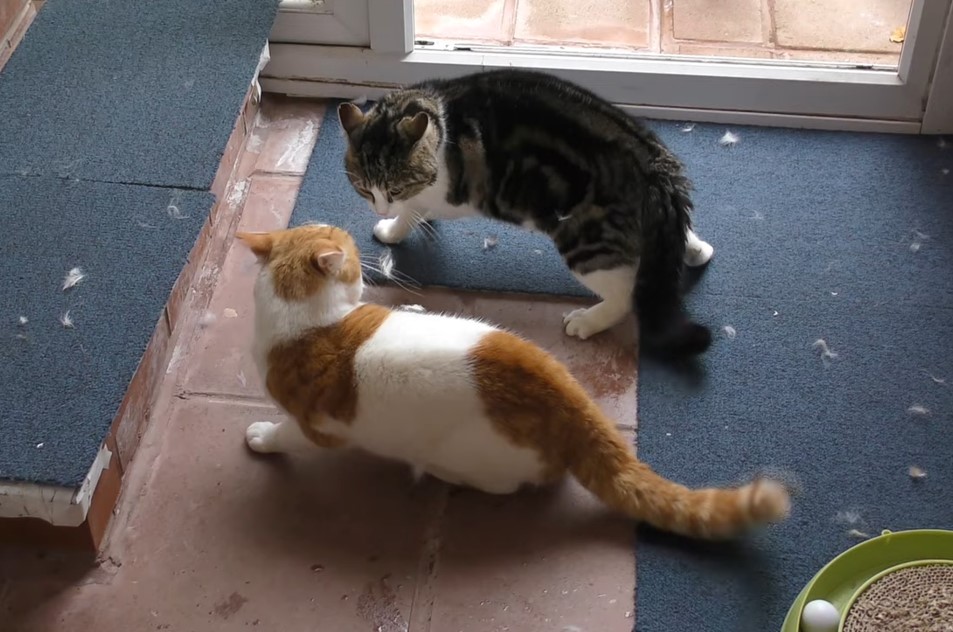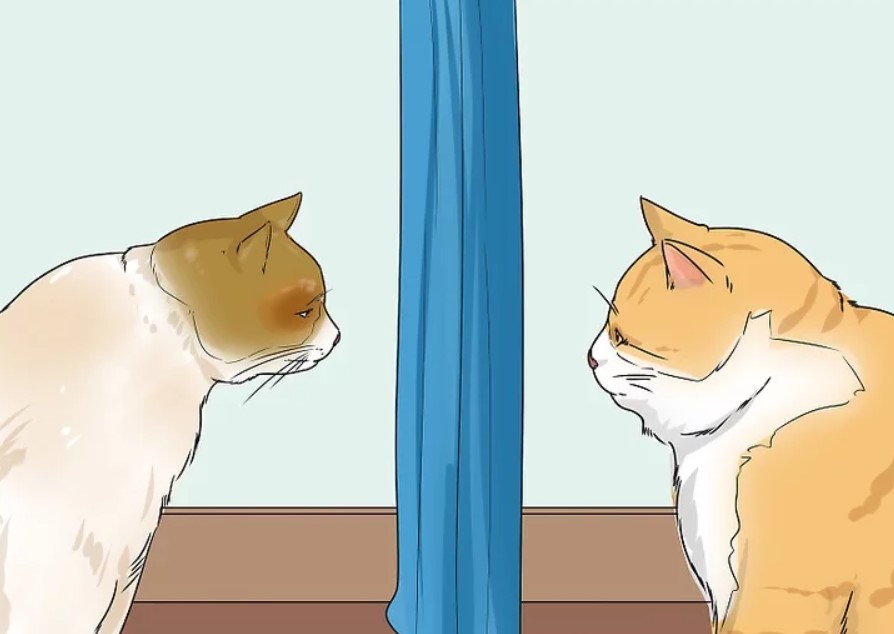
Cat fights can look wild, loud, and even scary, but not every clash leads to serious harm. Some cats hiss and swat to set boundaries, while others might go too far and cause real injury.
Every cat owner should know what sparks these fights and how to stop them before things get worse. Safety starts with spotting the signs early and keeping tension low at home.
Do Cat Conflicts Ever Turn Deadly?
Cat fights are a common sight, and while they may look and sound frightening, it is very rare for these conflicts to result in death.
Most cats rely on aggressive displays like growling, hissing, and posturing to intimidate their opponent rather than inflict serious harm.

In fact, it is highly uncommon to hear of a cat losing its life purely from a fight with another feline.
However, there are situations where these fights can lead to severe consequences, especially for stray or feral cats.
I’ve seen cats fighting many times before, but I honestly never saw that any of them got away with injuries.
However, after exploring this topic deeper, I saw that many pet owners actually got through much more serious issues with their felines facing injuries that could turn lethal.
A striking example comes from a cat owner named Rouen, who shared her harrowing story on an online forum.
Rouen had three female house cats that had always seemed inseparable. Two of them, raised together since they were kittens, had shown nothing but affection for each other—until one day, everything changed.
Out of nowhere, the two cats began fighting in a way that Rouen described as “fighting to the death.” The battle was so intense that it left urine and feces scattered across the room, and the cats became impossible to separate safely.
When she and her partner finally managed to break them apart using water, both cats continued to hiss and growl from their separate spaces.
Despite several attempts to reintroduce them through glass doors, even the sight of each other would trigger another aggressive outburst.
For over a month, the cats had to be kept in different rooms, each filled with litter boxes and other necessities.
The strain of the constant separation was challenging for Rouen and her partner, but the thought of rehoming one of their beloved cats felt too heartbreaking to consider.
Veterinary consultations and calming products like Feliway offered little help, leaving Rouen desperate for a solution.
I also went to Reddit to see if there are more people experiencing the same problem. A user in the Explain Like I’m Five forum explained that most animals, including cats, try to avoid fatal confrontations within their species.
They rely on intimidation tactics like growling and hissing, and even when fights turn physical, they typically “pull their punches” to avoid serious injury.
Yet, engaging in a fight that risks severe injury is usually a last resort, as it could threaten their survival.
Another user added that cats, both domestic and wild, are more inclined to retreat than risk a life-threatening fight, especially since severe wounds can be as dangerous as a death sentence in the animal world.
Why Cat Fights Happen?

Cats fight for several reasons, and understanding these motivations can help prevent dangerous altercations.
Here are the primary causes:
- Territorial Disputes: Cats are territorial animals. They mark their areas with scent glands and will defend their space from other cats. When two cats’ territories overlap, confrontations are more likely.
- Resource Competition: Limited access to food, water, or resting areas can trigger fights. Cats will compete over essential resources, and this often leads to aggression.
- Social Hierarchy: Cats in the same household or community may fight to establish dominance. This is especially common when new cats are introduced to a group.
How Dangerous Can Cat Fights Get?
Most cat fights are brief, but they can cause serious injuries.
- Bite and Scratch Wounds: Cats have sharp teeth and claws, which can puncture the skin and cause deep wounds. These injuries often trap bacteria under the skin, leading to infections.
- Infection Risks: Puncture wounds are prone to infection. Bacterial infections like abscesses are common and can become life-threatening if untreated. According to veterinary research, infections from bite wounds occur in about 50% to 80% of cases.
- Disease Transmission: Cat fights can spread diseases such as Feline Immunodeficiency Virus (FIV) and Feline Leukemia Virus (FeLV). FIV is often transmitted through deep bite wounds, weakening a cat’s immune system and making them vulnerable to other infections.
Signs of Injury to Watch For
If your cat has been in a fight, it is crucial to monitor for signs of injury or infection.
- Swelling and redness around wounds
- Puncture marks or open wounds
- Signs of pain or sensitivity
- Lethargy and loss of appetite
- Fever or hot spots on the skin
How To Keep Your Pet Safe?
Preventing cat fights is essential for the safety of your pets.
- Spay or Neuter: Unneutered male cats are more aggressive. Neutering them reduces hormone-driven aggression and territorial behavior.
- Provide Plenty of Resources: Make sure your cats have multiple feeding stations, water bowls, and litter boxes. This reduces competition and keeps them calm.
- Create Safe Spaces: Cats need personal space. Provide hiding spots and separate resting areas so that they can retreat when they feel stressed or threatened.
- Use Pheromones: Synthetic pheromones, available as diffusers or sprays, can help calm anxious or aggressive cats. These mimic natural feline scents and create a more peaceful environment.
- Distract and Intervene Safely: If a fight starts, make a loud noise to break it up. Never try to separate fighting cats with your hands, as this could result in injury.
But Can You Really Prevent Cat Fights?
Preventing cat fights in a household with multiple cats may seem challenging, but with the right strategies, you can significantly reduce the likelihood of dangerous altercations.
It all comes down to understanding cat behavior, using effective techniques, and creating a harmonious environment.
1. Never Use Your Hands to Break Up a Fight
It is essential to protect yourself when intervening in a cat fight. Using your hands to separate fighting cats is dangerous because cat bites can easily become infected.
Cats have sharp teeth that puncture deeply, and the bacteria they carry can lead to serious infections, sepsis, or even more severe health issues.
Always keep your hands out of the fight unless you are wearing thick bite gloves.
2. Use Distraction for Minor Fights
If you catch the situation early and the fight has not fully escalated, try using a distraction.
Calmly call out to the calmer of the two cats, shake a bag of treats, or use an engaging toy that your cat loves.
Make sure the distraction is something highly appealing to the cats; using their favorite toy or treat works best.
Once the tension is broken, separate the cats into different rooms with a closed door to give them space to cool down.
how to break up a cat fight? the answer is snack break pic.twitter.com/vRznvPK2Ap
— Punch Cat (@PunchingCat) September 13, 2024
3. Place a Barrier Between Fighting Cats

If the fight is already in full swing, you need a safer approach. Using a physical barrier to separate the cats is much more effective and less stressful for them than scare tactics like loud noises or water sprays. A flattened cardboard box works well and is sturdy enough to keep the cats apart while reducing their visual contact. Thick blankets, large towels, or even couch cushions can also work in a pinch to separate the cats safely.
4. Guide the Cats to Different Rooms
Once you have used a barrier to separate the cats, gently guide them to different areas of your home.
Use a soft broom or another object to keep your distance while helping one cat move away.
Ensure the cats remain separated for at least 24 to 48 hours to allow them to fully calm down. If they still seem stressed, extend this separation period.
5. Avoid Startle Tactics
While it might be tempting to use a loud noise or a spray bottle to break up a fight, these methods can backfire.
Startling your cats can increase their stress levels, make them more fearful, and even worsen the aggression over time.
Cats may associate the fear they feel with each other, leading to more frequent fights. Only use these methods as a last resort if a serious injury is imminent.
6. Repair and Reintroduce
After a fight, it is crucial to give your cats a chance to reset. Consider doing a modified cat reintroduction process, where you gradually reintroduce them with positive associations, like feeding them on opposite sides of a closed door.
Monitor their body language carefully and be prepared to call in a professional if needed.
7. Identify the Source of the Conflict
Understanding why the fight happened is key to preventing future conflicts. Was it a territorial dispute, competition over resources, or redirected aggression from seeing another cat outside?
Identifying the root cause can help you make the necessary changes, such as adding more litter boxes or blocking windows where outdoor cats can be seen.
8. Call in a Professional if Needed
If your cats continue to fight or you are unsure how to handle their aggression, consider consulting a veterinarian or a certified cat behaviorist.
They can provide strategies to manage and reduce aggression and can also check for any underlying health issues that might be causing behavioral problems.
Last Words
Cat fights are tough, and dealing with them can be exhausting. But knowing what triggers these conflicts and taking action to manage them is important.
Sometimes it’s as simple as giving them space or separating them safely. If things keep getting out of hand, getting help from a pro might be the way to go.
In the end, you’re doing your best to keep your cats safe, and that’s what matters.
Read Next – Dog Breeds with the Highest Bite Statistics.
















